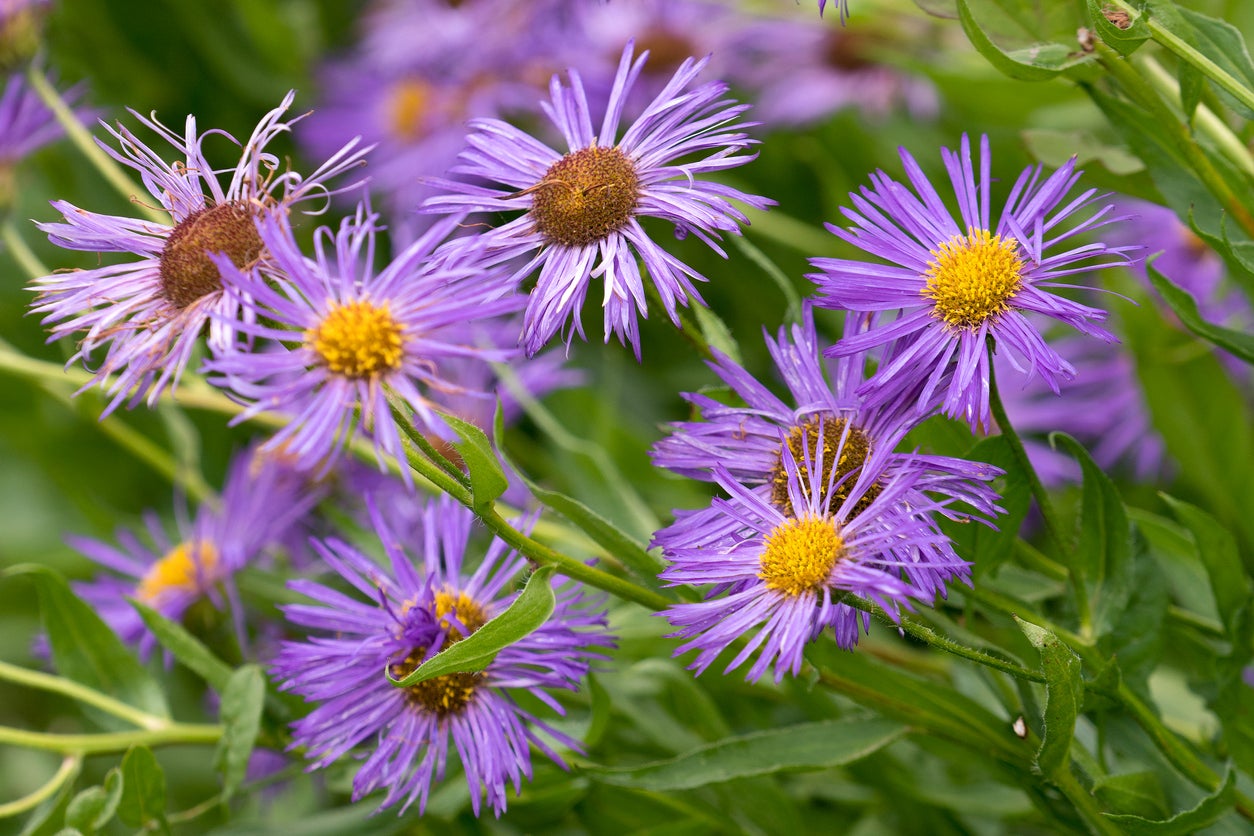Powdery Mildew Aster Control – How To Get Rid Of Powdery Mildew On Asters

Aster flowers are cheery, star-shaped blossoms that bloom in the fall when other flowering plants are finished for the season. While asters are hardy, easy to grow, and are, indeed, a welcome sight in the early fall, they do have their share of problems. One such issue, powdery mildew on asters, causes damage to the plant-- rendering it unsightly. Treating aster powdery mildew relies on early identification of the symptoms of this fungal disease.
Aster Powdery Mildew Symptoms
Powdery mildew is a fungal disease caused by Erysiphe cichoracearum. It is one of the most common diseases found in plants and afflicts not only flowers but vegetables and woody plants as well.
The first indication of the disease is a white, powdery growth visible on the upper leaves. This white powder is made up of threads of fungal tissue (mycelium) and mats of asexual spores (condia). Infected young leaves become distorted and new growth may be stunted. Infected buds often fail to open. Leaves may wither and die. The disease is most prevalent in the spring and fall.
Powdery Mildew Aster Control
Powdery mildew fungal spores are easily transmitted via water and air movement. Infected plants do not need to be under stress or injured for this fungal disease to afflict them, and the infection process only takes between three and seven days.
The pathogen overwinters in infected plant debris and survives on weed hosts and other crops. Conditions fostering infection are a relative humidity greater than 95%, moderate temps of 68 to 85 degrees F. (16-30 C.), and cloudy days.
Keep an eye out for any signs of powdery mildew on asters. An epidemic can occur practically overnight, so it’s important to be vigilant. Remove any plant debris and dispose of any infected plants. Keep the areas surrounding the asters free from weeds and volunteer plants.
Otherwise, it is advisable to spray the plants with a recommended fungicide at the first sign of the disease or apply sulfur. Be aware that sulfur can damage plants if applied when temps are over 85 degrees F. (30 C.). Powdery mildew can develop resistance to fungicides, with the exception of sulfur, so be sure to alternate fungicide applications.
Gardening tips, videos, info and more delivered right to your inbox!
Sign up for the Gardening Know How newsletter today and receive a free copy of our e-book "How to Grow Delicious Tomatoes".

Amy Grant has been gardening for 30 years and writing for 15. A professional chef and caterer, Amy's area of expertise is culinary gardening.
-
 Looking For Plants To Give You The Soft And Fuzzies? Try These 5 Fuzzy Leaf Plant Options
Looking For Plants To Give You The Soft And Fuzzies? Try These 5 Fuzzy Leaf Plant OptionsLovers of texture, drama, silver foliage and tactile plants will adore these special sensory garden additions. These fuzzy leaf plant options will leave you all aglow
By Susan Albert
-
 Get Ready For A Summer Of Hummers! Grow These Full Sun Hummingbird Plants and Flowers
Get Ready For A Summer Of Hummers! Grow These Full Sun Hummingbird Plants and FlowersIf you’re lucky enough to enjoy a sunny backyard, make sure you are maxing out on your pollinator opportunities and grow these full sun hummingbird plants and flowers
By Tonya Barnett